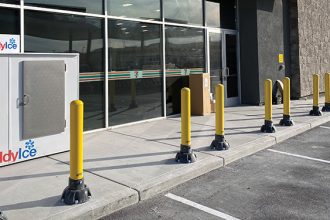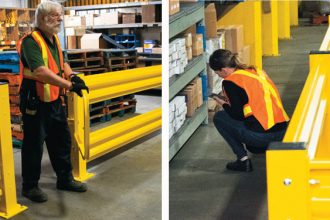Protective Guarding Helps Warehouses Be OSHA Compliant And Eliminate Hazards
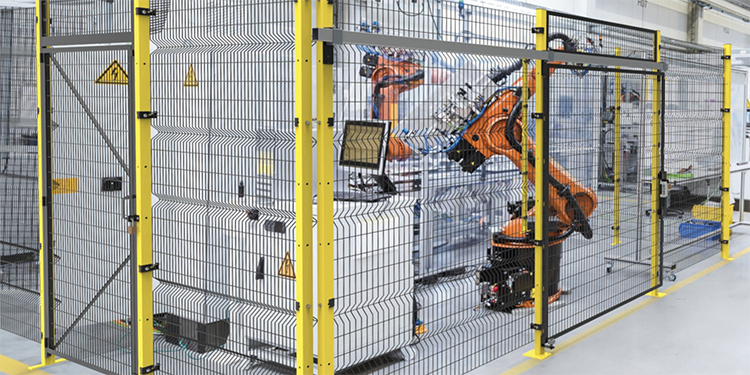
Last October, the Occupational Safety and Health Administration (OSHA) began unscheduled inspections warehouses and distribution centers as part of its new National Emphasis Program. The agency’s goal is to reduce and eliminate hazards in these operations, which employ more than 1.9 million people. Particularly since warehousing injury rates are up to two times higher than that of private industry. Obviously, it’s not possible to prepare in advance for a surprise visit by an OSHA inspector. However, there are steps facilities can take to ensure worker health and safety. Among those measures, utilizing protective guarding helps warehouses be OSHA compliant and eliminate hazards.
The focus on distribution, warehousing, and fulfillment operations is particularly timely, said Aaron Conway, President of Mezzanine Safeti-Gates. The company is a member of the Protective Guarding Manufacturers Association (ProGMA).
“There are a lot of hazards in these environments,” he noted. “Employees are increasingly getting hurt as operations try to keep up with the growth in e-commerce and online shopping. Plus, the facilities themselves are expanding in terms of square footage. That means more workers employed in an operation, and more chances for an accident.”
The ongoing challenges of attracting, hiring, and retaining an adequate headcount is further exacerbating the risk of injuries from hazard exposures, continued Conway. “When turnover is high, it’s more likely that training will become less consistent. That makes it even more important to utilize protective guarding solutions in order to be OSHA compliant.”
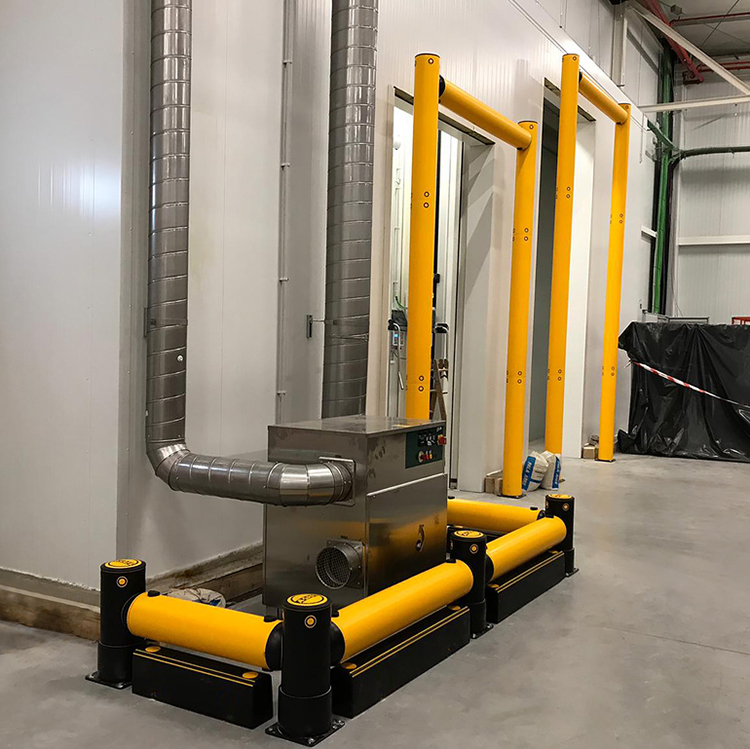
OSHA’s Focus Is On These Hazards
The OSHA NEP lists several common safety and health hazards in warehousing and distribution. They include being struck by moving vehicles or caught in between equipment; slips, trips, or falls; blocked aisles; unclear exits; powered machinery; excessive heat; and improper ergonomics.
Therefore, per the NEP, OSHA inspectors are focusing on dangers associated with:
- Powered industrial vehicles.
- Material handling and storage.
- Walking and working surfaces.
- Means of egress.
- Fire protection.
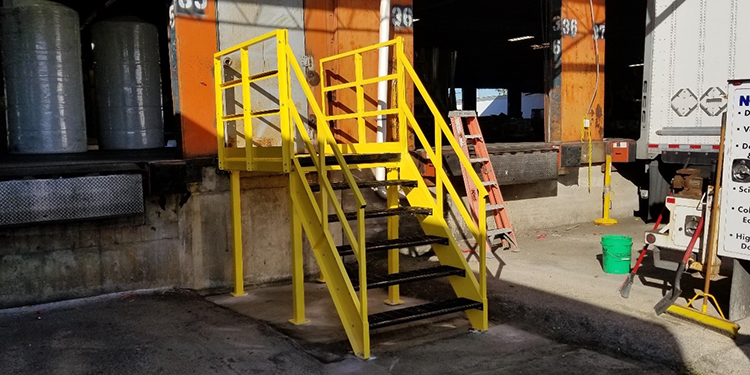
Solutions That Help Companies Be OSHA Compliant
“ProGMA members offer protective guarding solutions for all the hazards OSHA inspectors are looking at,” Conway said. “Installing this equipment proactively significantly reduces the risk of injuries, as well as helps an operation ensure they will be OSHA compliant.”
Additionally, he continued, these hazardous scenarios can be further mitigated by establishing safety procedures and practices — and training personnel to follow them.
“Having safety equipment in place is part of a comprehensive safety strategy,” said Conway. “The safest operations with the fewest injuries and accidents are the ones that truly prioritize all three areas.”
Among the protective guarding solutions available help warehousing and distribution facilities be OSHA compliant are:
Industrial Guardrail and Barriers
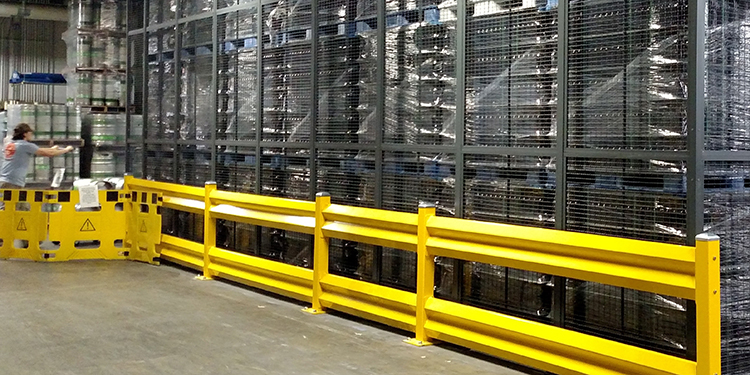
Equipment that shields employees from powered industrial vehicles includes guardrails, bollards, and curb barriers. All of these solutions create separation between designated pedestrian walkways and vehicle traffic zones. They also protect exits and other means of egress.
“To minimize the chance of a lift truck striking someone, it’s important to assess traffic patterns and identify areas of high risk,” he explained. “Then, use the safety barriers to slow or stop a forklift from encroaching in the pedestrian space. That reduces the chance of someone becoming pinned, entrapped, or crushed.”
Different types of forklifts and traffic patterns call for different barrier solutions to ensure the guarding will withstand an impact. To help operations managers and facility owners assess their options, ProGMA offers the ANSI MH31.2 Test Method for Crash Testing Industrial Guardrail Barriers and Barrier Posts. The standard details a uniform testing methodology for evaluating the performance of these safety structures.
OSHA Compliant Machinery Guarding
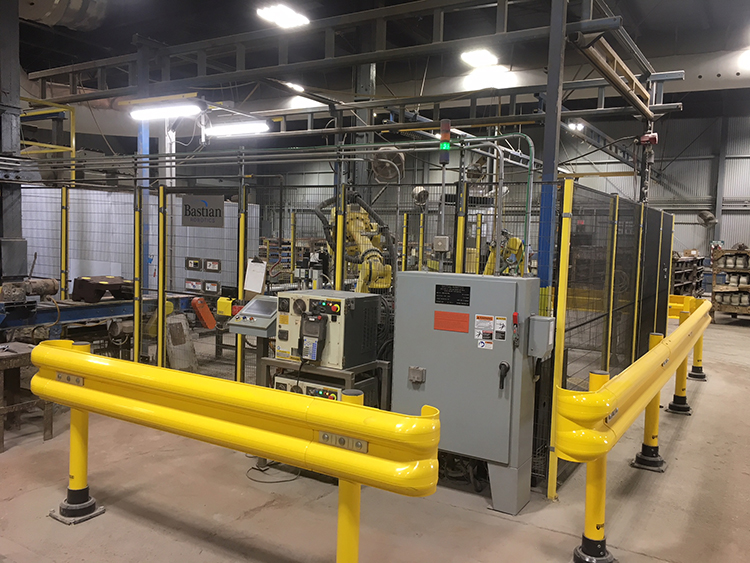
OSHA’s Regulation 29 CFR 1910.212 calls for protective machine guarding to protect employees from hazards associated with machinery, automation, and robotic systems. Solutions include barriers and panels that secure the perimeter of the equipment.
“To prevent employees from coming into contact with this equipment, operations should use barriers with controlled access entries,” Conway said. “These incorporate a safety interlock that automatically shuts down the equipment when the access door opens. That further helps an operation be OSHA compliant.”
Rack Protection

To protect storage equipment and systems — such as pallet rack — from forklift impacts that could result in a collapse, there are several different types of protective guarding. OSHA compliant solutions include:
- Devices that shield rack columns from impacts at the end of a row where traffic is highest and forklifts frequently turn corners. These include bollards, guardrail, and curbing.
- Guards that mount to the aisle-side face of pallet rack columns to deflect impacts. These rack leg protectors, also called column guards, attach to the floor, the column, or both.
Preventing Falls from Elevated Storage Systems
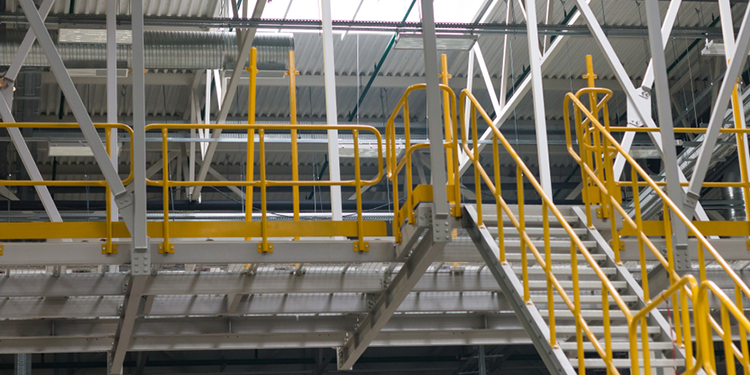
As e-commerce distribution center owners attempt to utilize the full cube of the building, pick modules and elevated work platforms are stretching up to four levels high, noted Conway.
“Installing pedestrian guardrails around the perimeter will help reduce the risk of falls from these elevated systems,” he said. “Additionally, adding kickplates to the edge will stop items from rolling off and falling to the ground floor — where they could potentially strike a worker.”
Rack supported pick modules for pallet handling should also have safety gates, pallet drop gates, and pallet flow gates. These protective guarding solutions secure access openings to prevent falls.
Flue Space Protection
With most new warehouses incorporating overhead sprinkler systems for fire suppression, it has become critical to ensure adequate spacing around every pallet load stored within rack. Those open spaces — both transverse (side-to-side within storage bays) and longitudinal (back-to-back in double rows) — must remain clear. Otherwise the water released from the sprinklers may not flow properly through the rack to suppress a fire.
“To keep flue spaces clear, containment netting or steel mesh panels install on the back and sides of racks,” Conway noted. “When rack is close to pedestrian walkways, these containment systems are another way to protect personnel from falling items.”
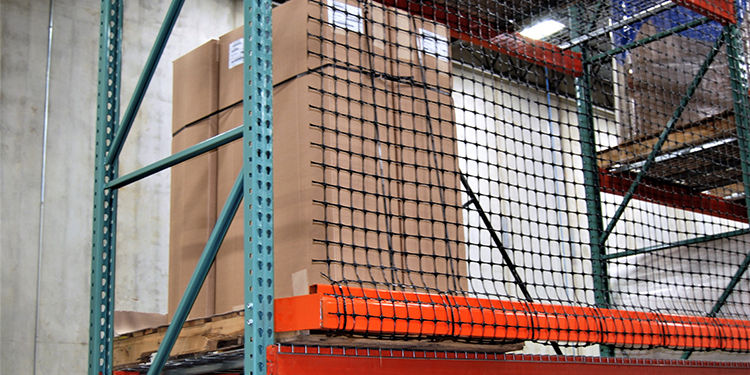
Find More OSHA Compliant Protective Guarding Solutions
The optimal time to consider protective guarding is before an OSHA inspector arrives, concluded Conway.
“As noted before, it’s far more effective to be proactive. First identify hazards, then work with safety experts to determine the optimal guarding solution,” he said. “The members of ProGMA offer multiple resources on our website to help with both objectives.”
Additionally, ProGMA member companies frequently visit operations in person to point out areas of concern and make safety recommendations. Connect with them via mhi.org/progma.


